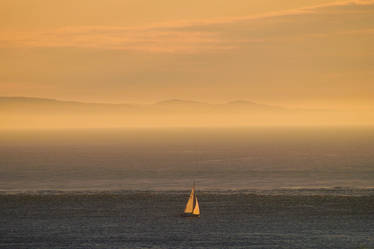I recently read an article on Reddit that explored the best way to photography Christmas lights and it raised some interesting points. Rather than re-hash what has already been said, I've delved into a few tutorials around the web to give an overview of some hints and tips - and will link them all at the end of this article so that you can investigate for yourself.
When you take a Photograph, the camera will often over-compensate with the colours that it's trying to capture and objects that look fairly white to the naked eye don't appear so in the photo that you've taken. White Balance aims to override that. But just setting your camera to Auto White Balance and hoping for the best is not good enough...
The above shots show the same location taken firstly with auto white balance - and then secondly with the white balance set to shade. Setting Shade means that the oranges and different hues that you see with your naked eye are instantly highlighted in the image. So those amazing nature shots you see of fantastic Autumn forests...a lot of the time that's how the photographers do it.
It's the same when dealing with Christmas lights. You definitely need a tripod for starters, unless you've got a sturdy purchase somewhere, a tripod or indeed monopod is very useful and stabilises your shots. A useful article on which tripods, what's available and when to use can be found here.
All D-SLR's allow you to fiddle with white balance and the more recent models will have specific modes that you can choose from. Tungsten is a useful mode for old Christmas lights but if you're shooting more modern LED Christmas Lights it will need to be set a bit bluer.
The biggest tip, one that I put into practice at the weekend, is not to wait until it's dark to start shooting. This time of year provides ample opportunity across the world for those who celebrate the season to head outside with the cameras and get those cosy christmas shots. But it's vital that you don't allow it to get too dark before you start preparing and testing. The best time to start shooting is in-between light and dark, that moment when the sun has gone and the sky is a deep blue but it's not completely black.
Shooting indoors allows for a bit more scope not only with preparation, but with lighting. The shot below I took last Christmas - and I turned off the main light in the room that I was stood in, and just allowed a smaller light above the cooking hob to give me what I needed.
As you can see, you don't need much to make a room cosy and the Christmas lights stand out. In the shot below the Photographer has worked almost completely with a room lit by the Christmas Tree - and it works well!
Whether to use flash or not needs to be thought of as being an 'individual decision.' There's no common rule, but when photographing Christmas lights it's best to try and avoid flash if you can. You know you can do it!
Bokeh is a fantastic effect, especially at this time of year and there are many opportunities to obtain it. When I've captured Bokeh, it has mostly been by accident but there are a few tips you can use to try and create it. Bokeh is determined by the focal length of your camera, the distance that you are away from your subject and the aperture that you are using. Again it's captured best with a tripod or use of a sturdy surface. Putting more fairy lights together (or whatever your light source is) means that the Bokeh effect is increased and a longer lens means that the Bokeh is larger, and whilst still pretty, can be less effective. Getting in to your subject as much as possible helps create the effects you see here.
White Balance: Understanding It!
Five Easy Steps to Photograph Christmas Lights
Bokeh Lights: Photography Challenge










